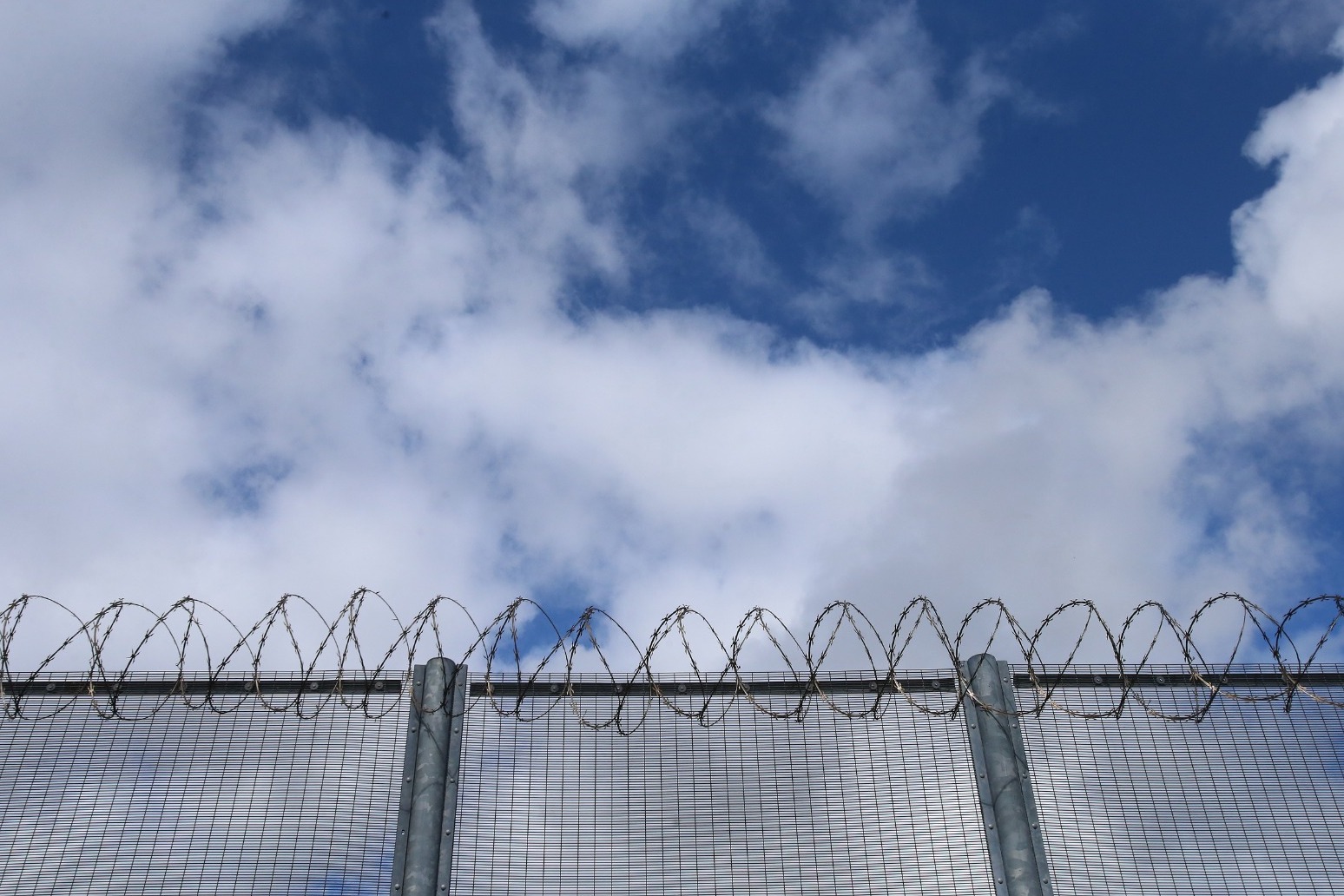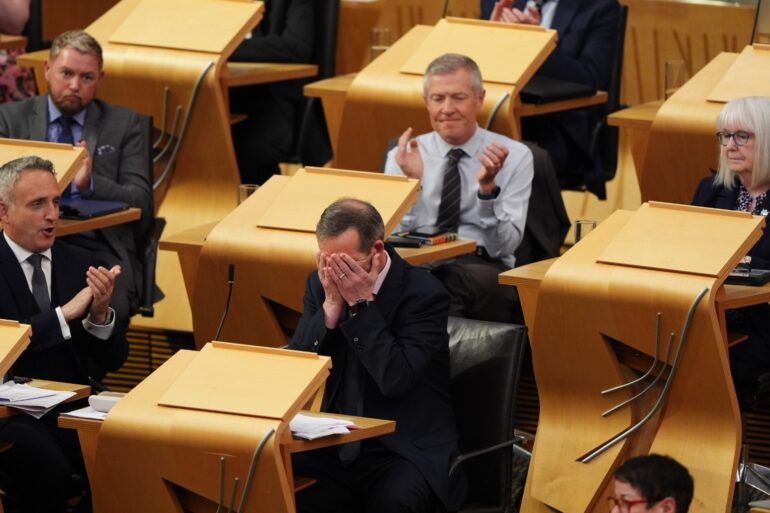-
 play_arrow
play_arrow
Kl 1 Radio Local radio for west Norfolk
-
 play_arrow
play_arrow
KL DISCO KL Disco Playing Disco Music from the 70's onwards.24/7
-
 play_arrow
play_arrow
KL COUNTRY KL COUNTRY Playing New and Classic Country Music 24/7
-
 play_arrow
play_arrow
KL ROX KL ROX The best of New and Classic Rock.24/7
-
 play_arrow
play_arrow
KL SUMMER Summer Vibes 24/7 from KL1 Radio across West Norfolk
-
 play_arrow
play_arrow
KL CLASSICAL Your Symphony Starts Here
-
 play_arrow
play_arrow
KL CHILL Just Chill!
-
 play_arrow
play_arrow
KL POP The Best POP Hits all day Long!
-
 play_arrow
play_arrow
KL XTRA KL XTRA
music_note

Government plans to boost prison capacity could fall short by thousands of cell spaces within two years and cost the taxpayer billions of pounds more than anticipated, Whitehall’s spending watchdog has warned.
The National Audit Office (NAO) said current expansion plans are “insufficient to meet future demand” amid a projected shortage of 12,400 prison places by the end of 2027, with costs expected to be at least £4 billion higher than initially estimated.
The prisons overcrowding crisis is down to the failure by the previous Conservative government to make sure policy changes bringing in longer jail sentences and boosting police numbers matched the space available in prisons to hold criminals, according to a report published on Wednesday.
Campaigners branded the findings “damning” and the spiralling costs “eye-watering” as they repeated calls for an overhaul of how criminals are sentenced.
The watchdog also said the then government’s 2021 pledge to create an extra 20,000 cells spaces by building more prisons, temporary wings and refurbishing existing cell blocks is now not expected to be met until 2031 – around five years later than promised.
As of September, a third (6,518) of the 20,000 had been made available, according to the NAO.
Reasons behind delays include “unrealistic timelines” and overestimating the ability to get planning permission for three out of the six new prisons due to be built.
The plans are now expected to cost between £9.4 billion and £10.1 billion – least £4.2 billion more than 2021 estimates amid a rise in construction prices, the report said.
Sir Geoffrey Clifton-Brown, chairman of the Commons Public Accounts Committee which scrutinises government spending, said prisons were “already at the brink” and it was “unacceptable” that plans “beset with delays” would not meet future demand.
“The Ministry of Justice (MoJ) has been in firefighting mode, prioritising short-term solutions to the crisis. These are not only expensive but also increase risks to prisoner, staff and public safety.
“The Government must pull together a coherent and viable long-term plan for a prison estate that meets demand and delivers value for taxpayers’ money,” he added.
The report – which comes ahead of fresh prison population projections due to be published by the MoJ on Thursday – found the “crisis” was a “consequence of previous governments’ failure to align criminal justice policies with funding for the prison estate, leading to reactive solutions which represent poor value for money”, adding: “Years of under-investment in maintaining the prison estate put MoJ and HMPPS in a weak position to respond to these increases.”
The current expansion plans are “insufficient to meet projected future demand”, with the MoJ “relying” on measures like the sentencing review announced in October to “reduce demand for prison places and close the gap between demand and capacity” and “address a projected shortage of 12,400 prison places by the end of 2027, should its central population projection be realised”, it said.
The NAO also warned the Government department “does not have any contingency plans to increase prison capacity as it views it has limited options left to do this”.
Pia Sinha, chief executive of the Prison Reform Trust, described the findings as “damning” and said they laid bare the “negligence of previous governments and their approach to penal policy” which has left taxpayers facing an “eye-watering bill with no certainty on when the ongoing prison capacity crisis will end”.
Andrea Coomber, chief executive of the Howard League for Penal Reform, said the “scathing” report confirms “we cannot build our way out of the prison capacity crisis”, adding: “We have to reduce demand on a system that has been asked to do too much, with too little, for too long.”
Richard Garside, director of the Centre for Crime and Justice Studies, blamed governments and parliament for being “joint architects of a decade-in-the-making prisons crisis” as he called on policy and law makers to “set a fresh course, aimed at containing prison population growth in the short-term and reducing it in the medium to long-term”.
Since September the Government has been freeing thousands of inmates early in a bid to cut jail overcrowding by temporarily reducing the proportion of sentences which some prisoners must serve behind bars in England and Wales from 50% to 40%.
But prisons are still expected to reach critical capacity again by July.
MoJ figures show there were 86,059 adult prisoners behind bars in England and Wales on Monday, slightly higher than the 86,038 recorded at the beginning of last week.
The so-called operational capacity for English and Welsh men and women’s prisons is 88,852, indicating there is now cell space for 2,793 criminals.
The latest data means the prison population is only 2.8% lower than when the number of inmates being held hit a new record high of 88,521 on September 6, PA news agency analysis shows.
An additional 1,350 cell spaces tend to always be kept free above the overall operational capacity of the prison estate in England and Wales as a contingency measure so jails can cope with a sudden influx of inmates or change in the make-up of the prison population, according to the MoJ.
Head of the NAO Gareth Davies said: “The Government must learn lessons from the current prison capacity crisis to ensure the long-term resilience and cost effectiveness of the prison estate.”
Prisons minister Lord Timpson said: “This report lays bare the litany of failures which brought our prison system to the brink. This not only risked public safety but added billions in extra costs to taxpayers.
“We have already taken immediate action to address the crowding chaos engulfing our jails and will now focus on improving conditions in the long-term. This includes shortly publishing a 10-year prison capacity strategy to put our jails on a sustainable footing.”
Published: by Radio NewsHub

Similar posts
Upcoming shows

Paul Baker – KL1 Breakfast
7:00 am - 10:00 am

Chris Fisher – KL1 Mornings
10:00 am - 1:00 pm

Tim Lee – KL1 Afternoons
1:00 pm - 4:00 pm

Richard Dix – KL1 Drive
4:00 pm - 7:00 pm

80’s ’til 8
7:00 pm - 8:00 pm
-

Linnets budget could be cut by ‘best part of 30%’ next season

McArthur hails landmark moment after Holyrood vote on assisted dying

Stephen Fry Celia Imrie and Paloma Faith among Celebrity Traitors contestants

Free flowers up for grabs – and could be gone within an hour

Popular circus returns tomorrow for brand new show
Message Us
Copyright The Mediasite UK - 2025



